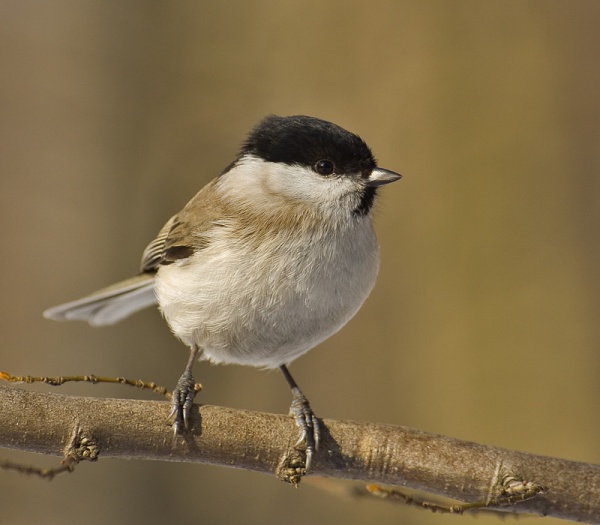Facts About Marsh tit
The marsh tit is an endearing small bird belonging to the tit family, Paridae, within the genus Poecile. If you've ever encountered a willow, Père David's, or Songar tit, you might find the marsh tit quite familiar due to their similar appearance. These birds are diminutive, measuring about 12 cm in length and weighing around 12 grams. Their most noticeable features include a black crown and nape, pale cheeks, a brown back, and greyish-brown wings and tail. Ornithologists recognize between 8 to 11 subspecies of the marsh tit.
In terms of diet, marsh tits are not fastidious. They feed on a variety of caterpillars, spiders, and seeds. For nesting, they favor tree holes, often enlarging existing cavities rather than excavating new ones. A typical clutch comprises about 5 to 9 eggs. These birds inhabit temperate regions of Europe and northern Asia, thriving in diverse habitats, including dry woodlands.
The marsh tit was first described by Carl Linnaeus in 1758 and classified within the genus Poecile. DNA analyses have shown that they belong to a group known as the Eurasian 'typical chickadees.' Ten recognized subspecies of the marsh tit have distinct distributions across Europe and Asia.
When it comes to their habitat, marsh tits are quite versatile. They are prevalent in temperate Europe and northern Asia, with a preference for moist broadleaved woodlands, particularly those with oak or beech trees. They are also found near rivers, in parks, and even gardens. While most marsh tits are sedentary, remaining in one area year-round, some may exhibit slight movements post-breeding season. Unfortunately, their numbers have been declining, especially in the UK, where their population has decreased by more than 50% since the 1970s.
Behaviorally, marsh tits are agile and tidy, akin to their tit relatives. They are monogamous, often maintaining lifelong pair bonds. Nesting typically occurs in tree holes, lined with moss and hair. During warmer months, their diet primarily consists of spiders and insects; however, they switch to seeds, nuts, and berries in autumn and winter. They are also known for their habit of hoarding seeds, particularly favoring beechmast when it is available.

 Ireland
Ireland